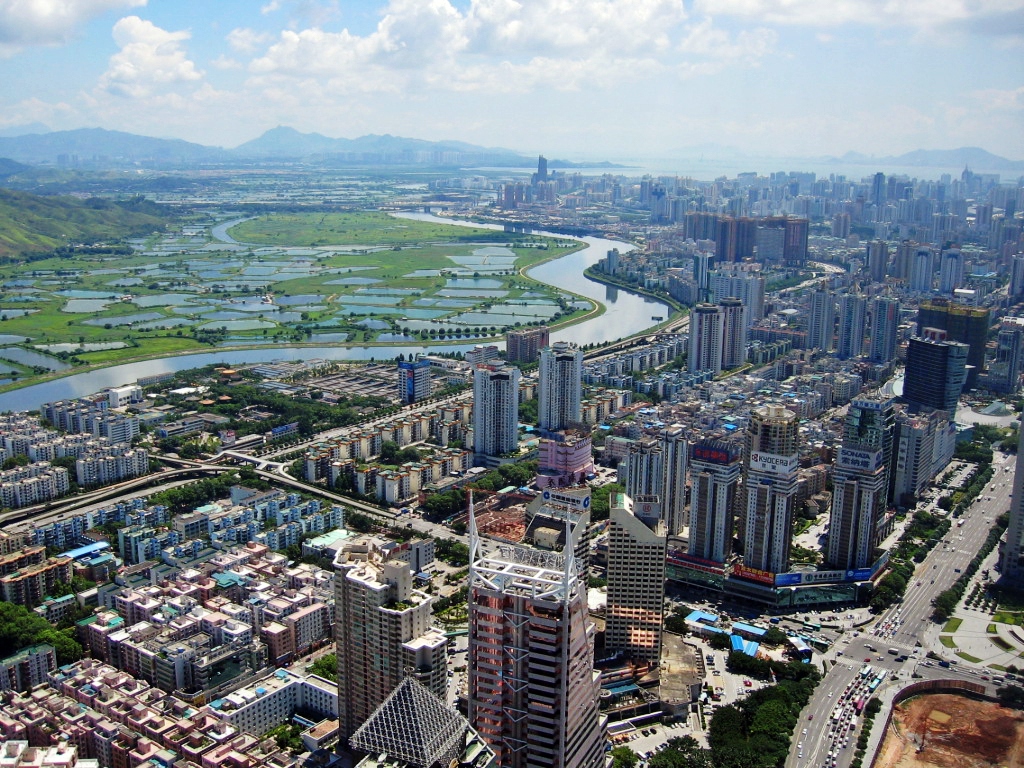
As stated previously:
- Shenzhen was originally populated by farmers and fisherman (Pomeranz, 2006)
- Farmland has been depleted since Shenzhen was established as an SEZ (land grabbing) (Harris & Udagawa, 2014, 619; Tianhong, et al., 2016, p. 874)
- Shenzhen’s food self-sufficiency has been reduced due to depletion of farmland (Harris & Udagawa, 2014, p. 619)
Unlike in the United States property is not owned by an individual. Rather, the land is divided into two categories: urban and rural. Urban land is owned by the state while rural land is owned by rural collectives (Zhang & Donaldson, 2012, p.19). When Deng Xiaoping came to power his goal was economic success. This led to the establishment of Shenzhen as a special economic zone. Unfortunately, China did not have the resources to develop infrastructure in Shenzhen (Shi et al., 2007, p.4-5). Thus the Chinese state handed over land use rights to investors depending on price, industry and length of time (Shi et al., 2007, p.4-5). Farmers inputs were not considered.
- This decision:
- reduced power of the rural collectives
- took away farmers’ rights
- empowered the government

Land use change in Shenzhen has resulted in farmers losing their livelihood to industrialization. Farmers are supposed to receive compensation for loss of land, plants and attachment to land either by receiving a new job or through payout. However farmers are often under compensated by either (Cai, 2003):
- not being allocated a job
- receiving a lower salary than promised
- receiving a lower payout than promised
The establishment of Shenzhen as an SEZ has not only increased air pollution, but has also take away jobs from farmers, reduce farmland and reduce food self-sufficiency. Since land is ultimately controlled by the state, farmers have no say if it is turned over for industrialization. They also have no say if they are not properly compensated. Industrialization in Shenzhen has left farmers helpless. Those that give up their land run the risk of future instability while those that protest land grabbing by the state run the risk of punishment.
Looking into the future:
- The reduction of farmland due to industrialization in Shenzhen and other cities like it has led China to land grab on another continent: Africa (Cassell, 2013)
- Farming in Africa can be beneficial to the continent because of the investment China would provide (Cassell, 2013)
- It can also be detrimental if strict labor and environmental policies are not enforced (Cassell, 2013)
Citations:
Cai, Y. (2003). Collective Ownership or Cadres’ Ownership? The Non-Agricultural Use of Farmland in China. The China Quarterly. 175: 662-680.
Cassell, D. (2013). China’s Role in African Culture. 2(6-9). http://www.ictsd.org/bridges-news/bridges-africa/news/china%E2%80%99s-role-in-african-agriculture
Harris, P. G., & Udagawa, C. (2004). Defusing the Bombshell? Agenda 21 and Economic Development in China. Review of International Political Economy, 11(3): 618-640.
Hofman, J. (Photographer). (2012). Shenzhen Construction vs Farming [digital image]. Retrieved December 6, 2016 https://www.flickr.com/photos/hofmanphotos/7135150085/
Pomeranz, K. (2006). Special Economic Zones (SEZS). In J. J. McCusker (Ed.), History
of World Trade Since 1450 (Vol. 2, pp. 706-708).
Shi, P., Yuan, Y., Zheng, J., Wang, J., Ge, Yi., & Qiu, G. (2007). The effect of lang use/cover change on surface runoff in Shenzhen region, China. 69(1): 31-25.
SSDPenguin (Photographer). (2011). Luohu viewing southwest, with Shenzhen River and Hong Kong’s Frontier Closed Area in the background [digital image]. Retrieved December 6, 2016 https://en.wikipedia.org/wiki/Shenzhen#/media/File:Shenzhen_CBD_and_River.jpg
Tianhong, L., Fengjiao, B., Peng, H., & Yuanyan, Z. (2016). Non-Point Source Pollutant Load Variation in Rapid Urbanization Areas by Remote Sensing, Gis and the L-THIA Model: A Case in Bao’an District,Shenzhen China. Environmental Management, 58, 873-888.
Zhang, Q. & Donaldson, J. (2012). China ’s Agrarian Reform and the Privatization of Land: A Contrarian View. Journal of Contemporary China, 22(80): 255-272.
